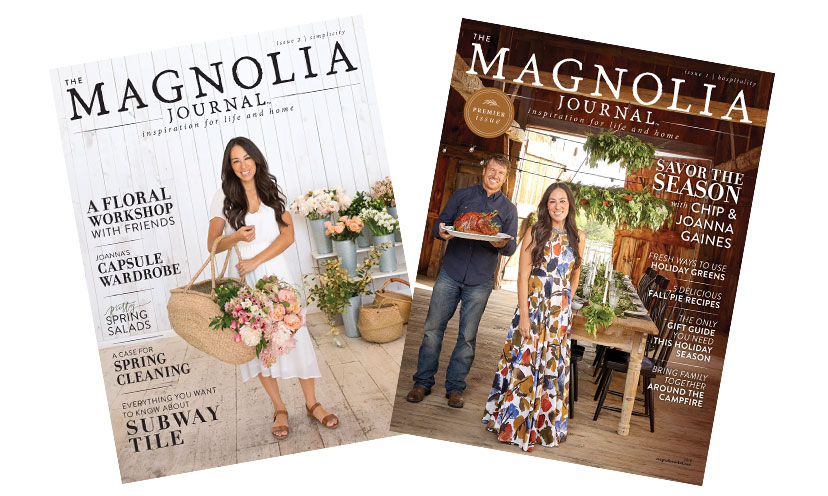You bring the fan base; we’ll provide the expertise. That’s the basis promise of several recent high-profile celebrity brand print publications, like Chip and Joanne Gaine’s Magnolia Journal and Ree Drummond’s Pioneer Woman.

And according to Greg Dool in Folio:, “it seems a business model dating back to the days of the internet’s infancy may be working now better than ever before.”
“For celebrities and high-profile brands with their eyes set on a new print venture,” Dool continues, “the appeal of partnering with a publisher like Meredith—or the former Time Inc., as Martha Stewart did, all the way back in 1990—is infrastructure and experience.”
For Chip and Joanne, they brought to the table a huge television audience and a sizeable digital following. The Pioneer Woman brought a large following from her wildly popular lifestyle blog, branching into new channels and outlets from there.
When Magnolia first launched back in the fall of 2016, we knew it would fit right in to the current trends in print magazines.
“It was really a natural thing for them to want to launch that in a printed product,” Chris Guilfoyle, group publisher of Meredith’s women’s group, told Folio: at the time. “They have a tremendous social media following for both Magnolia Market, as well as each of their individual social media accounts, but I think what a magazine did for them is that it allowed them not only to have something that is permanent — a keep sake if you will — but it also expanded their voice and their footprint into that whole lifestyle arena that they feel that they have to share.”
Their first issue flew off the shelves, as did the first issue of The Pioneer Woman the following summer. It’s this idea of a lifestyle magazine centered on a well-known and trusted celebrity that has such massive appeal of late. When people ask me what’s really new in the magazine industry lately, this is one example I love to give.
It’s a perfect demonstration of the swing from mass market to niche that’s being fed by more selective consumers. Often we think about smaller niche publications in this context, but for celebrity-backed titles like Magnolia, The Pioneer Woman and others, we see mass market publishers taking on these partnerships and making them work.
“For Meredith executives,” Dool explains, “it was not only the scope but the diversity of the ‘Fixer Upper’ fan base that made a magazine from its stars such an attractive prospect.
“[The show] really transcended [age], from young millennials all the way through retirees, and everybody liked it for a different reason,” said Doug Olson, president and GM of Meredith magazines. “There was the subject matter, the home improvement; [Chip and Joanna’s] relationship, how they interacted with each other; and others really liked the family aspect of it, how the kids were involved,” he continues.
For celebrity brands, print brings legitimacy, credibility and trustworthiness – that “quasi-religious power of the written word,” as Dool puts it. For the advertisers, it offers a channel where their ads are a welcome part of the reader’s experience. And for the publisher, it brings a built-in audience and a solid reader base from the start.
To understand what the new magazine industry is really about, this is a great place to start.
